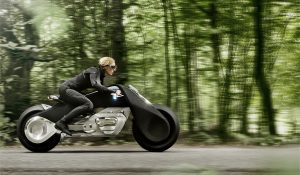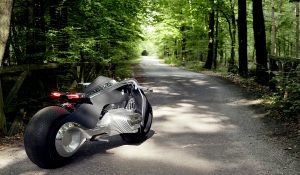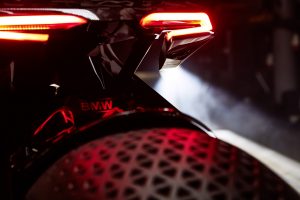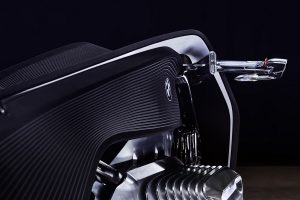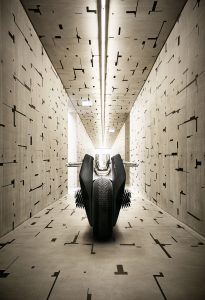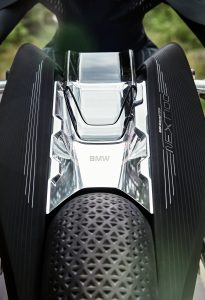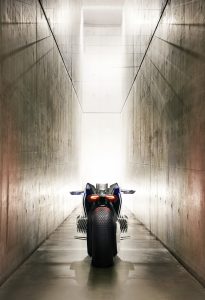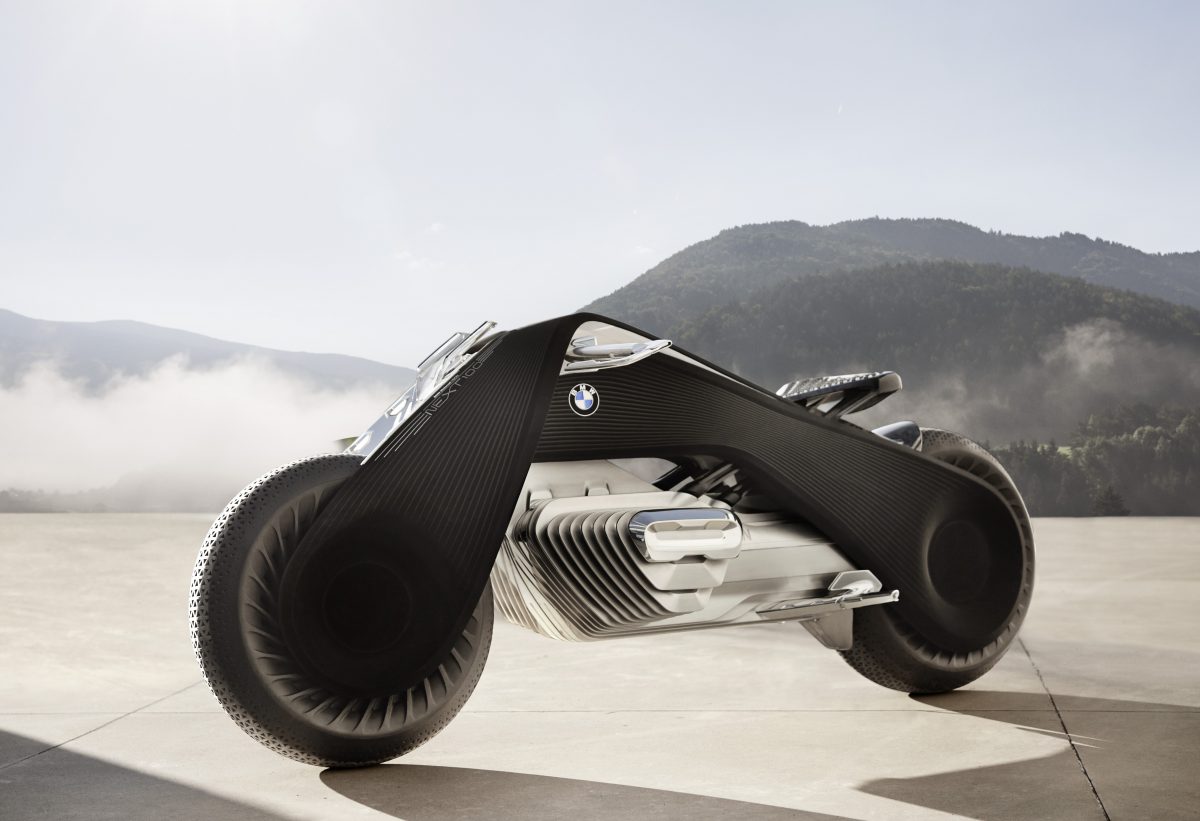
It’s been 100 years since BMW forged their way into the automotive sector, making waves along the way as they’ve earned their place among the industry’s best. In an effort to celebrate all that is BMW Group and their innovative forward-thinking design team, they’ve launched their VISION NEXT 100 series of high-profile concept vehicles in 2016 to showcase the technological advancements that will surely change the landscape of automotive manufacturing in the years to come.
Their latest effort was recently unveiled at an empty airplane hangar on October 11th in Santa Monica, CA. A ground-breaking new design, the BMW Motorrad VISION NEXT 100 motorcycle aims to solve the safety concerns often associated with high-performance motorcycles by creating a self-balancing (nearly self-driving) and fully integrated riding experience for both novice and experienced riders alike.
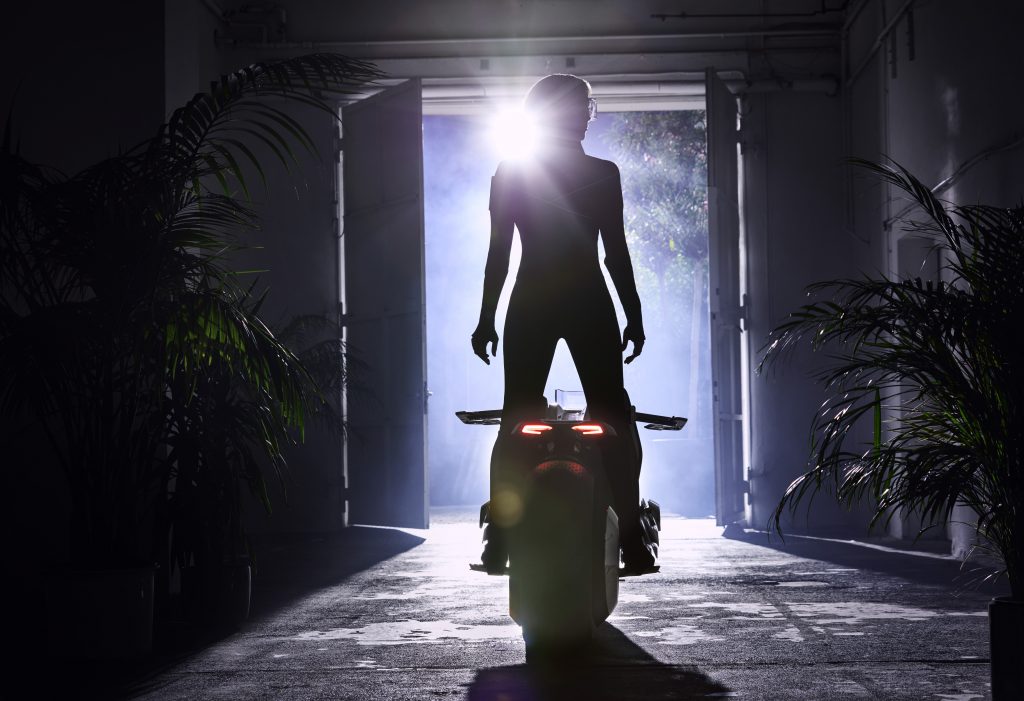
At first glance, the Motorrad VISION NEXT 100 motorcycle looks similar to what you might see in a futuristic sci-fi thriller like Tron, or the inevitable Fast & Furious 25 that will no doubt eventually make it’s way to a theater near you. But aside from a wacky design concept, the latest two-wheeled innovation from BMW Group is looking to break the mold on what it means to develop a safe and stylish motorbike.
Modeled after the classic look of BMW’s first ever motorcycle, the R32 from 1923, the Motorrad VISION NEXT 100 brings a wealth of new features and safety elements to the forefront. First and foremost, the frame itself has been shaped in the traditional triangle format to represent the iconic R32. Sculpted as a single integrated piece, the Flexframe links the front and rear wheels to allow the bike to be steered without the use of bearings and joints found in most motorcycles today. The breakthrough makes for a rather uncommon riding characteristic in which turning the handlebars adjusts the entire frame of the bike. This allows for light steering when at a standstill and the need for a stronger, more rigid steer at high speeds. The result is better handling and a safer platform for riders of all skill types.
Powered by a zero-emissions powertrain unit that’s been developed in the likeness of the traditional BMW Boxer engine, the polished aluminum block actually changes shape depending on usage conditions with the unit remaining compact when resting and extending outwards while on the road to offer better aerodynamics and protection from the elements.
Minimal in it’s design, the Motorrad model utilizes ever-so-carefully crafted details to help it stand out from the norm and leave a lasting impression on consumers. A large metal reflector integrated just above the front wheel with a daytime running light acts as a wind deflector and helps optimize air flow; while the seat, upper frame cover, and aerodynamically designed wings are all made of high-quality carbon. The design concept also eliminates most of the buttons and displays commonly found on today’s vehicles. A red-rocker switch on the end of the handlebar offers one of the only stand-out elements that’s reminiscent of the old analog days of biking.
The entire concept has one theme in mind – to create a self-balancing motorcycle that eliminates the need for protective gear or even a helmet. A rather insane concept we know. But when you take into consideration the modern technologies and breakthrough innovations being applied to the Motorrad’s VISION NEXT 100 design, it’s surprisingly not that far-fetched.
The bike comes with three major technology innovations, with the first of these being what BMW Group calls the “Digital Companion”. The highly complex riding gear, that works collectively with the cycle’s on-board performance elements, is constantly working in the background to evaluate riding conditions and provide assistance only when needed.
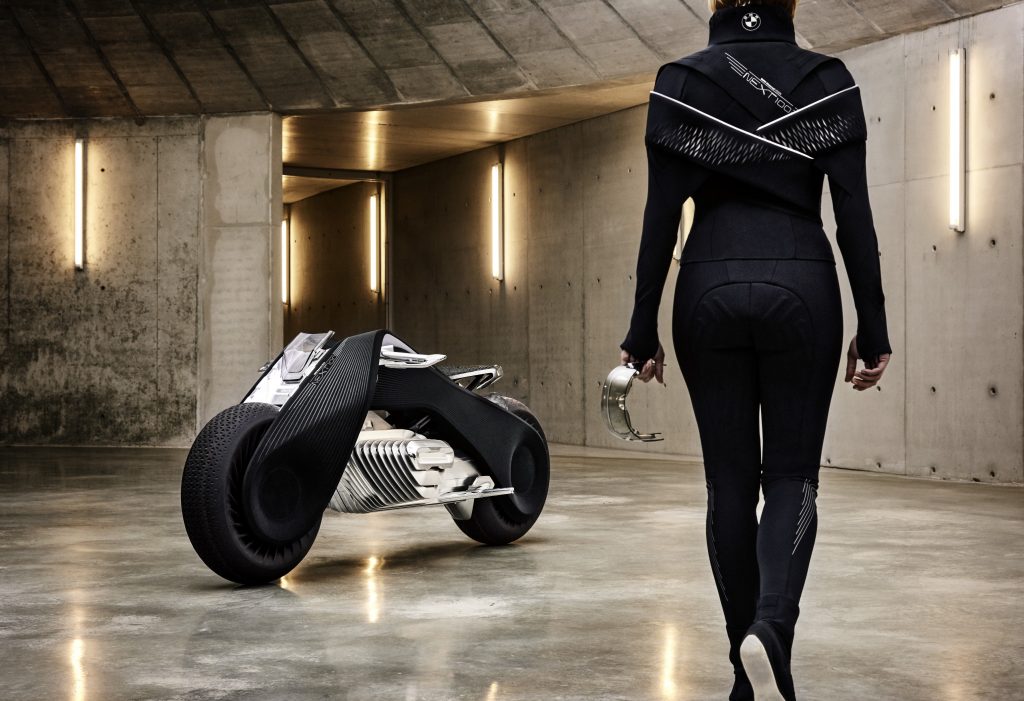
Working in tandem with the Digital Companion, the Visor offers what is surely the most innovative feature of this futuristic motorcycle concept. Controlled solely by eye movement, the Visor give riders access to a plethora of information related to driving conditions and hazards. Similar to the display in an airplane, the Digital Companion can suggest ideal lines and banking angles by using an upturned triangle with two horizontal lines extending outwards across the Visor. If a rider fails to correct their line or angle and is put in danger, the bike will correct itself.
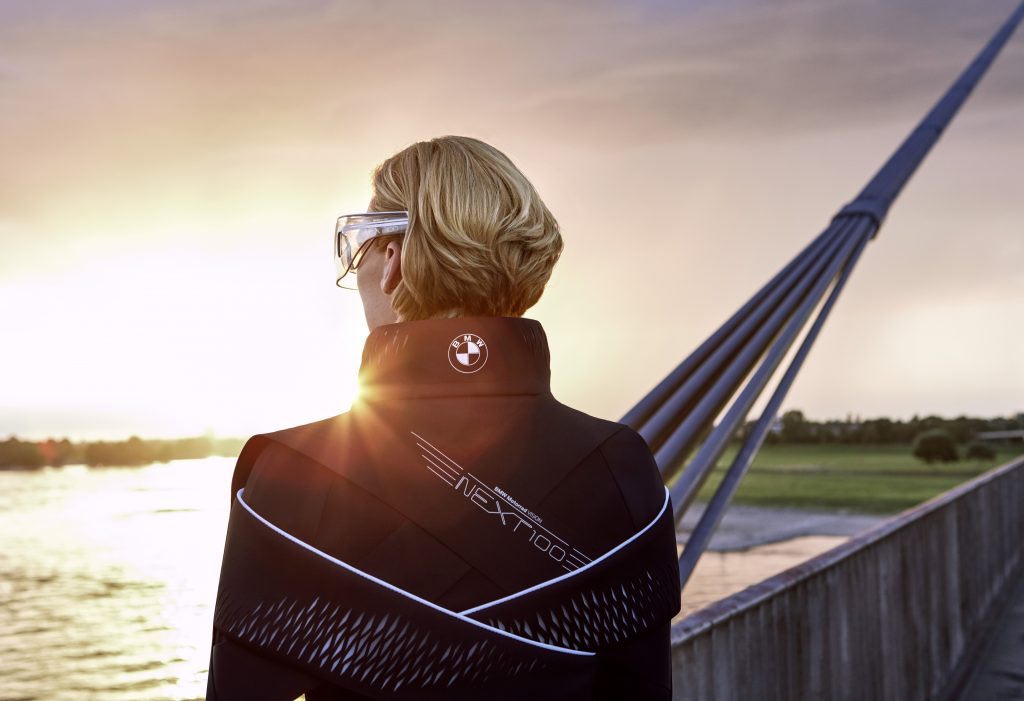
The riding gear, while offering both fashion and function, provides comfort and support where needed. Sensors in the suit keep track of pulse rate and body temperature, while navigation instructions can also be delivered via the vibrating elements that have been thoughtfully integrated into the arms and legs.
When coupled together, the design and technology make for an unprecedented look at what the future of motorcycling could become. A safer, more thrilling, and certainly more stylish way to get from point A to point B on two wheels. It’s a bike so smooth even your grandma could take it for a spin…and all without the use of even a helmet.


